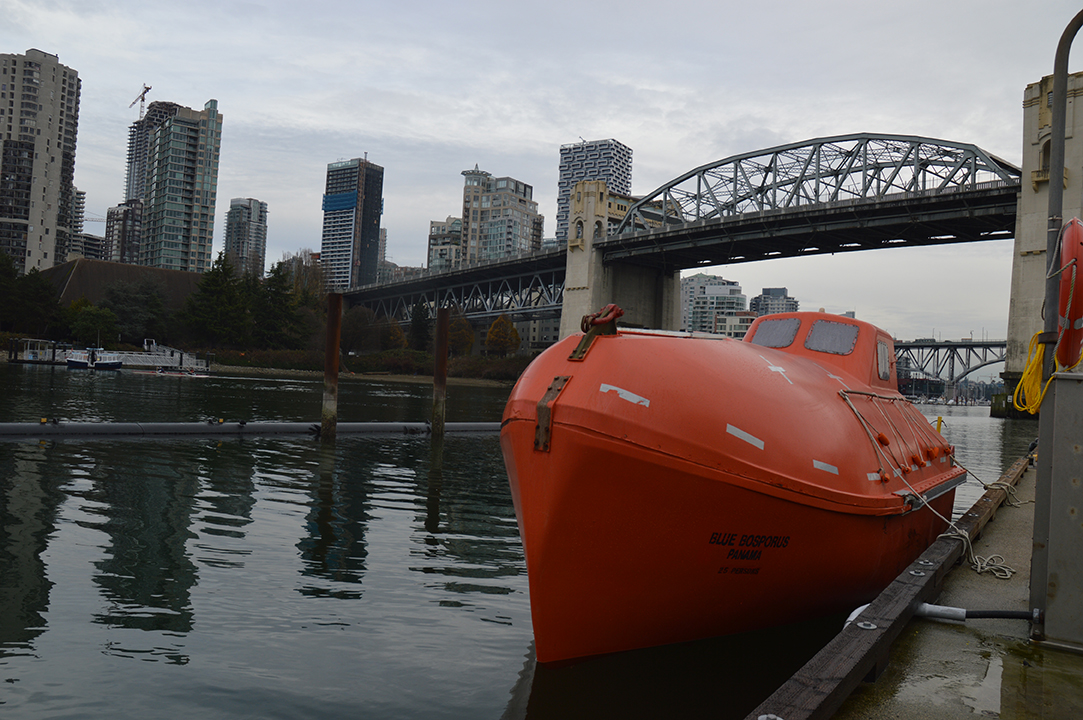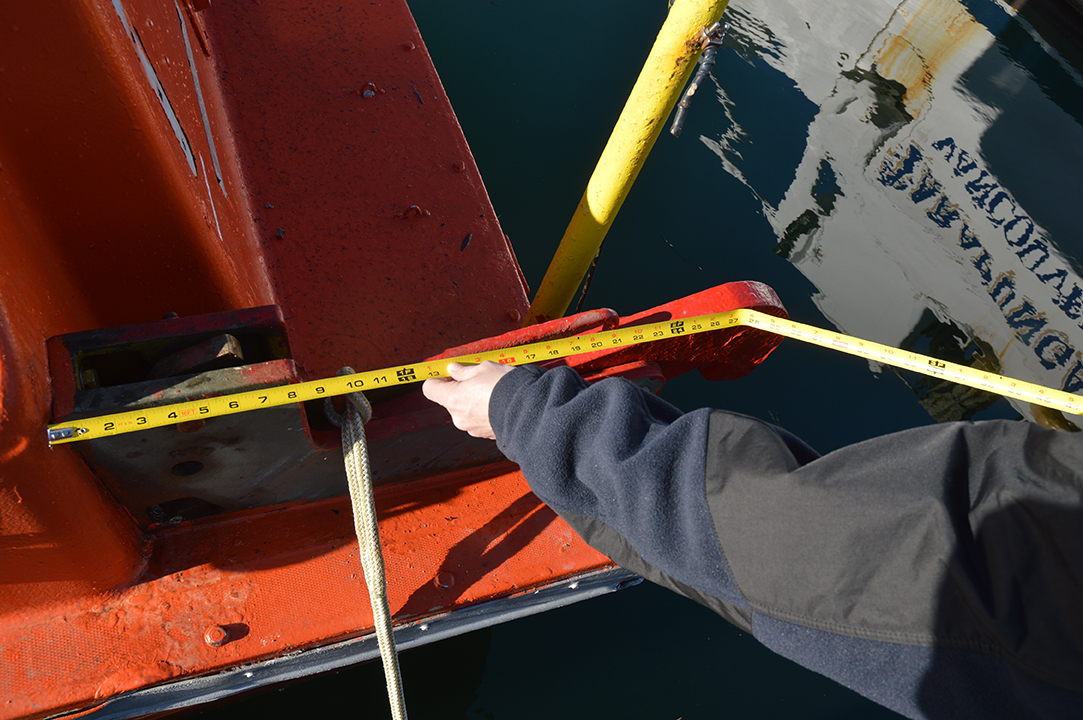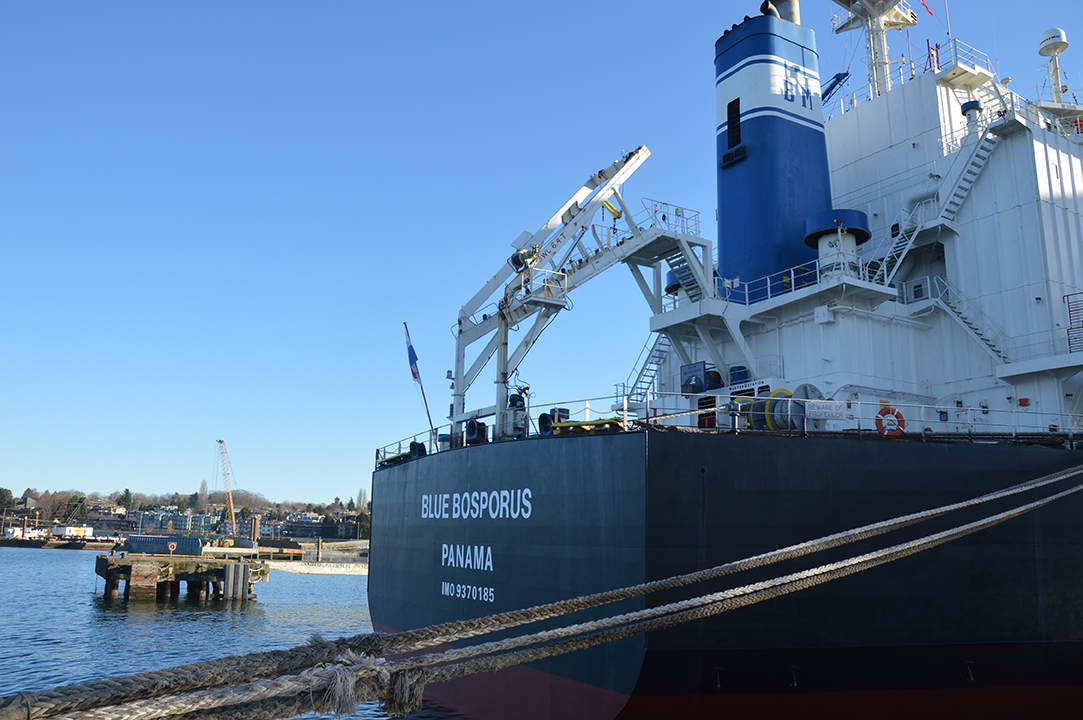Accidental release of free-fall lifeboat
Bulk carrier Blue Bosporus
English Bay, British Columbia
The occurrence
On , the crew on the bulk carrier Blue Bosporus were carrying out a free‑fall lifeboat drill at Anchorage 12 in English Bay, British Columbia, when the wire rope slings holding the lifeboat failed and it fell approximately 14 m to the water. There were 2 crew members in the lifeboat at the time. Both crew members were seriously injured and were transferred to hospital. The forward starboard side of the lifeboat’s hull was damaged. There was no pollution.
Media materials
News releases
Weakened hardware, improper securement led to accidental release and injuries during lifeboat drill in British Columbia
Read the news release
Deployment notice
TSB deploys a team to Vancouver, British Columbia, following the accidental release of a lifeboat of the bulk carrier Blue Bosporus
Richmond, British Columbia, 3 December 2020 — The Transportation Safety Board of Canada (TSB) is deploying a team of investigators to Vancouver, BC, to investigate the accidental release of a lifeboat of the bulk carrier Blue Bosporus that occurred on 1 December 2020. The TSB will gather information and assess the occurrence.
Investigation information
Download high-resolution photos from the TSB Flickr page.
Class of investigation
This is a class 3 investigation. These investigations analyze a small number of safety issues, and may result in recommendations. Class 3 investigations are generally completed within 450 days. For more information, see the Policy on Occurrence Classification.
TSB investigation process
There are 3 phases to a TSB investigation
- Field phase: a team of investigators examines the occurrence site and wreckage, interviews witnesses and collects pertinent information.
- Examination and analysis phase: the TSB reviews pertinent records, tests components of the wreckage in the lab, determines the sequence of events and identifies safety deficiencies. When safety deficiencies are suspected or confirmed, the TSB advises the appropriate authority without waiting until publication of the final report.
- Report phase: a confidential draft report is approved by the Board and sent to persons and corporations who are directly concerned by the report. They then have the opportunity to dispute or correct information they believe to be incorrect. The Board considers all representations before approving the final report, which is subsequently released to the public.
For more information, see our Investigation process page.
The TSB is an independent agency that investigates air, marine, pipeline, and rail transportation occurrences. Its sole aim is the advancement of transportation safety. It is not the function of the Board to assign fault or determine civil or criminal liability.



